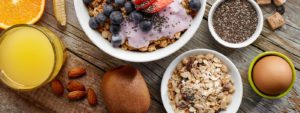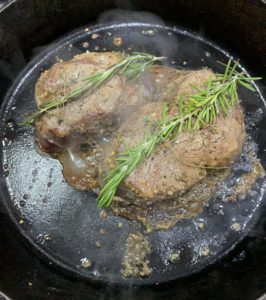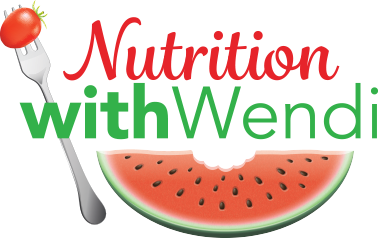
There’s No “One-Size-Fits-All” Nutrition Approach
An athlete’s energy and nutrient needs depend individually on his or her age, body composition, goals, and training volume, and depends globally on the demands and intensity of the sport. Put simply, the greater the intensity, duration and frequency of the activity combined with the athlete’s weight or body composition, the higher the demand of protein, carbohydrate and calorie intake.
If you’re a coach, parent or athlete reading this, don’t become overwhelmed. This article intends to introduce to you some general guidelines on optimizing energy needs (i.e. calories, protein, and carbohydrates) to sufficiently support overall health and advance athletic performance.
First rule of thumb, ALL adolescent athletes should consume breakfast, lunch and dinner with 2-3 snacks in between meals to fully optimize energy levels. You must build a plate that includes a source of lean protein, a fruit, a vegetable, a healthy fat and a serving of dairy if you wish to get real and progress with your nutrition. A visual of the plate and practical nutrition strategies can be found in my previous blog here.
Fuel Up to Avoid Stalling Out
Youth athletes have significantly higher nutritional needs than their less-active classmates because athletes need more calories to support performance demands, normal growth, general development and maturation. According to the Academy of Nutrition and Dietetics, female teen athletes need roughly 2,200-3,000 calories and male teen athletes need roughly 3,000-4,000 calories per day (depending upon the individual and sport). Additionally, adolescent athletes training in multiple sports may need upwards of 5,000 calories per day to maintain weight and support growth needs. It’s paramount to encourage adequate calorie consumption during times of heavy training. For perspective, low-energy availability in female adolescent athletes can lead to short stature, increased injury, delayed puberty, poor bone health, metabolic and cardiovascular issues, menstrual irregularities, disordered eating behaviors – this according to a review published in the International Journal of Sport Nutrition and Exercise Metabolism published by Desbrow et al., 2019.
Relative Energy Deficiency Syndrome (RED-S) is a more comprehensive label that builds on the condition of low-energy availability, also known as “female athlete triad,” to describe an energy deficiency gap that results when energy intake is insufficient to support daily activities, living, growth and function. RED-S affects primarily females, but also young males.
Premium Fuel for the Young Athlete – Carbohydrates!
Carbohydrates are an athlete’s most important source of energy for optimal athletic performance. Several studies carried out during the last 50-60 years have consistently highlighted carbohydrates as the primary macronutrient to sustain and enhance physical performance. The Institute of Medicine (IOM) has established that 45-65 percent of calories in one’s diet should come from carbohydrates or between 3 and 8 grams per kilogram of body mass, depending upon the exercise intensity. For example, a 14-year-old female athlete should consume 2,000-2,400  calories per day, with 225 – 270 g (45% of total calories) to 325 – 390 g (65% of total calories) from carbohydrates. Keep in mind the dietary reference intake (DRI) remains at 100 g per day and recommended daily allowance (RDA) at 130 g day for all age and sex categories (children ≥ 1 year), both measures not related to physical activity. High-quality carbohydrates for athletes to consume include, but are not limited to, 1. whole grains like pasta, rice, tortillas, bread, oatmeal, low-fat dairy, and energy bars, 2. fruits like berries & bananas, and apples, 3. starchy vegetables like squash, potatoes and eggplant. To experience a boost in energy, consider adding items from this longer list of quality carbohydrate-rich foods to achieve enhanced athletic performance.
calories per day, with 225 – 270 g (45% of total calories) to 325 – 390 g (65% of total calories) from carbohydrates. Keep in mind the dietary reference intake (DRI) remains at 100 g per day and recommended daily allowance (RDA) at 130 g day for all age and sex categories (children ≥ 1 year), both measures not related to physical activity. High-quality carbohydrates for athletes to consume include, but are not limited to, 1. whole grains like pasta, rice, tortillas, bread, oatmeal, low-fat dairy, and energy bars, 2. fruits like berries & bananas, and apples, 3. starchy vegetables like squash, potatoes and eggplant. To experience a boost in energy, consider adding items from this longer list of quality carbohydrate-rich foods to achieve enhanced athletic performance.
Performance tip: Make half your plate carbohydrates if you’re an endurance athlete, especially on heavy training days. The average athlete should be eating around 360-500 grams of carbohydrates per day. Failing to consume enough carbohydrates will cause a decline in performance, cognition, focus, and athletic performance. Time-to-fatigue and injury risk will also increase without enough dietary carbohydrates. To keep it simple, carbohydrates are not “optional”; they are essential. You can take it from an RDN whom stands for science or examine the science for yourself by checking out Nutritional Considerations for Performance in Young Athletes published in the Journal of Sports Medicine.
Power Up with Protein!
Protein is critical for building, maintaining and repairing many cellular structures, like skeletal tissues. Consuming enough protein supports synthesis of hormones, neurotransmitters, energy production, gene activity and transportation of biological molecules. The Institute of Medicine (IOM) has established that 15 to 20 percent of total calories, or about 70-160 grams should derive from high-quality protein sources.
To breakdown the science, consuming adequate protein is critical for proper growth, development and normal physiological function during adolescence leading into adulthood. Distinctive demands during adolescence, especially those that engage in high-intensity sport, call for a greater daily protein intake than that of adults. Currently the RDA for protein is 0.95 g/kg/day for children ages 4-13 years and 0.8 g/kg/day for adolescents between the ages of 14-18. Those that engage in regular training and endurance sports like swimming, rowing, distance running, and soccer may need 1.2-1.4 g/kg/day while power sports like weightlifting, gymnastics, football, wrestling shall require 1.0 – 1.5 g/kg/day .
 High-quality protein sources include beef, poultry, bison, pea protein, pork, tuna, turkey, seafood, fish, and dairy products, such as milk, yogurt, whey, cheese and cottage cheese. To find out how much protein some of your favorite sources provide, check out this list from the Academy of Nutrition and Dietetics. Keep in mind that not all proteins are created equal. To deter you from going down the rabbit hole of plant proteins vs. animal proteins, I will simply link an article for you to review here. It’s important to just remember that foods rich in leucine, a branched chain amino acid found in animal proteins, will have the greatest positive affect on driving muscle protein synthesis. We could get really complex on this topic but it’s enough to simply emphasize the importance of consumption of high-quality proteins that are listed above due to their rich leucine content, especially since we are addressing protein intake for adolescent athletes. Most young athletes barely consume enough calories and protein as it is. To keep it simple, make sure your adolescent athlete consumes ¼ of their plate or a 4 oz. serving of a high-quality protein three-five times per day. As I always say, success starts with the basics and carrying them out on a consistent basis.
High-quality protein sources include beef, poultry, bison, pea protein, pork, tuna, turkey, seafood, fish, and dairy products, such as milk, yogurt, whey, cheese and cottage cheese. To find out how much protein some of your favorite sources provide, check out this list from the Academy of Nutrition and Dietetics. Keep in mind that not all proteins are created equal. To deter you from going down the rabbit hole of plant proteins vs. animal proteins, I will simply link an article for you to review here. It’s important to just remember that foods rich in leucine, a branched chain amino acid found in animal proteins, will have the greatest positive affect on driving muscle protein synthesis. We could get really complex on this topic but it’s enough to simply emphasize the importance of consumption of high-quality proteins that are listed above due to their rich leucine content, especially since we are addressing protein intake for adolescent athletes. Most young athletes barely consume enough calories and protein as it is. To keep it simple, make sure your adolescent athlete consumes ¼ of their plate or a 4 oz. serving of a high-quality protein three-five times per day. As I always say, success starts with the basics and carrying them out on a consistent basis.
Failure by your adolescent athlete to consume adequate protein intake will cause declines in energy, weight, muscle growth, and strength, while increasing the likelihood of onset fatigue. Does this mean your adolescent athlete should be slamming protein shakes? Of course not, but they should be consistently consuming whole foods at regular mealtimes. Consuming good old fashioned chocolate milk on-the-go can even be a great way to increase calories while meeting additional protein intake demands. This is especially a great addition to refuel and re-hydrate post-practice or game! Make no mistake, a protein shake or chocolate milk will not make up for missed nutrients from consuming regular meals. Furthermore, supplements like protein powders are not regulated by the FDA and so it is important to select a protein powder that has been third-party tested with a NSF stamp of approval, which deems it certified for sport. This is paramount to ensure there are no banned substances on the label, that the product is manufactured in a facility that follows acceptable manufacturing standards, and that the contents of the supplement match what is printed on the label, ultimately being safe for consumption. To search supplements that are third-party tested and free of any banned substances, check out Informed-Sport.
Stirring it Altogether:
Knowing your carbohydrate and protein intake recommendations is great, but I  encourage using the plate as a method of hitting your intake requirements. If you consume a balanced plate with all the components 3-5 times per day with high-quality snacks in between, you’re likely going to meet the energy demands of your sport. Again, it’s important to remember that carbohydrates are the body’s preferred source of energy.
encourage using the plate as a method of hitting your intake requirements. If you consume a balanced plate with all the components 3-5 times per day with high-quality snacks in between, you’re likely going to meet the energy demands of your sport. Again, it’s important to remember that carbohydrates are the body’s preferred source of energy.
Keeping with the basics such as eating breakfast, lunch and dinner with small snacks in between meals will help improve your health and sport performance. Don’t skip meals and make sure your plate is full of colorful fruits and vegetables. Always choose water or milk over sugary beverage to support hydration and better overall health. It’s time we get back to the basics, which I discuss in detail in the last article I published, available for reference here. As always, nutrition is a secret weapon that can help you perform optimally in the classroom and in sport.
Your sports nutritionist,
Wendi Irlbeck, MS, RDN
